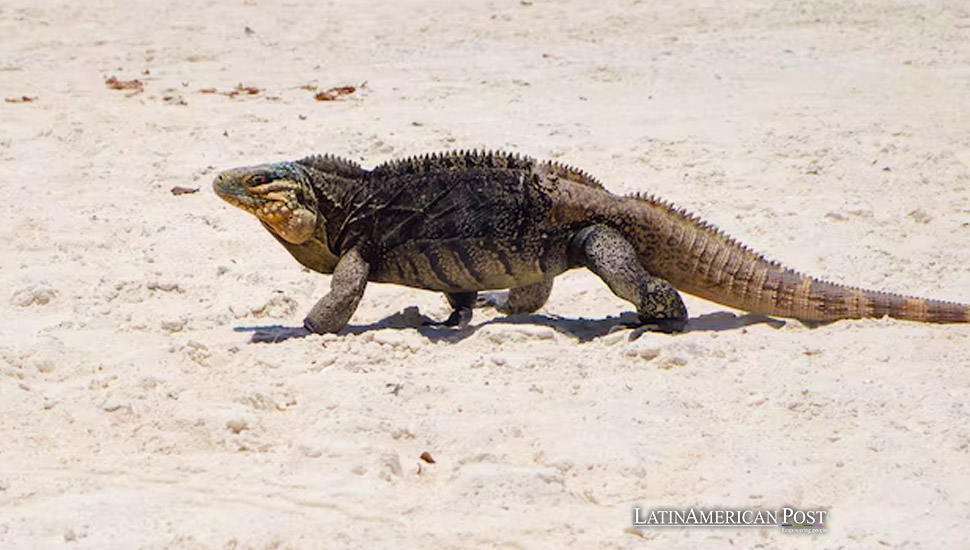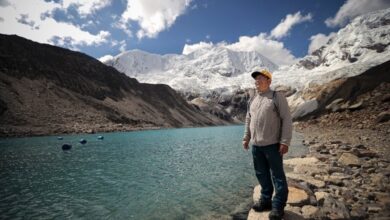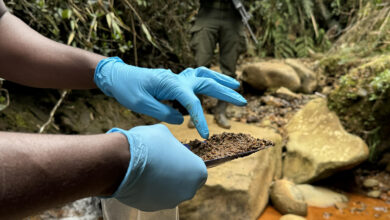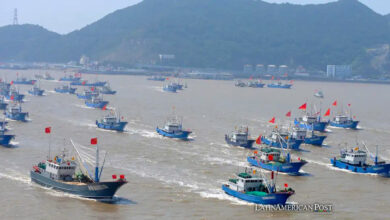New Species Saved from Extinction in the Caribbean

Thanks to dedicated conservation efforts, species once on the brink of extinction, like the white cay iguana, are making a remarkable comeback in the Caribbean. Over the past three decades, conservationists have revived over a dozen species, highlighting the power of intervention and habitat restoration.
In the crystal-clear waters of the Bahamas, nestled on a tiny islet, the white cay iguana’s fate once seemed sealed. By the early 1990s, its population had dwindled to fewer than 150 individuals due to habitat destruction and the arrival of invasive species like rats and raccoons. These predators wreaked havoc on the iguana’s nesting sites, preying on eggs and juvenile iguanas. But thanks to the dedicated efforts of conservationists, this story took a hopeful turn.
Through the Caribbean Alliance project, which has focused on species recovery since 1993, conservationists embarked on a mission to restore the iguana’s habitat. They removed invasive species, allowing the white cay iguana to rebound. With the invasive predators gone, the iguana’s population soared, growing from fewer than 150 individuals to over 2,000 today. Once teetering on the edge of extinction, the species is now thriving—proof that even the most fragile ecosystems can recover when given the chance.
This success didn’t happen in isolation. The white cay iguana is just one of over a dozen species brought back from the brink in the Caribbean. From the Bahamas to Puerto Rico and the Dominican Republic, conservationists’ efforts are helping safeguard the region’s unique biodiversity.
The Power of Restoration
The Caribbean, known for its breathtaking beaches and vibrant marine life, is also home to some of the world’s most fragile and endangered species. Many species are found nowhere else on Earth, making the region a biodiversity hotspot. However, human activity, including deforestation, tourism development, and the introduction of invasive species, has placed immense pressure on native wildlife. In some cases, species have been pushed to the very edge of extinction.
The Caribbean Alliance project was founded in response to these growing threats. Since its inception in 1993, the project has worked on more than 30 islands, focusing on habitat restoration, species monitoring, and removing invasive species. This hands-on approach has produced remarkable results, leading to the recovery of numerous species once believed to be lost forever.
One of the project’s most successful aspects has been the eradication of invasive predators like rats, raccoons, and feral cats, which have devastated local wildlife. By removing these threats, conservationists have allowed native species to rebound. Alongside the white cay iguana, species like the Puerto Rican parrot and the Jamaican iguana have also seen significant population increases, demonstrating the importance of invasive species management in conservation efforts.
In the Dominican Republic, conservationists have been working to save the Hispaniolan solenodon, a rare and ancient mammal that has survived since the dinosaurs. Once thought to be extinct, the solenodon has benefited from habitat restoration and predator control, and its population is slowly increasing. Similarly, the critically endangered Puerto Rican parrot has made a remarkable recovery in Puerto Rico, with captive breeding programs helping to boost numbers in the wild.
Invasive Species: The Silent Threat
Invasive species are one of the most significant threats to biodiversity in the Caribbean, and their impact can be devastating. These non-native species, often introduced by human activity, can quickly dominate ecosystems, outcompeting native species for resources and prey on vulnerable animals. For example, the introduction of rats to the Bahamas posed a deadly threat to the white cay iguana, whose eggs were easy prey for the invasive rodents.
Raccoons, not native to many Caribbean islands, were also a significant problem for the white cay iguana. These opportunistic predators raided nests and hunted juvenile iguanas, contributing to the species’ rapid decline. The presence of these invasive species created an imbalance in the ecosystem, leading to the near extinction of native wildlife.
However, removing invasive species is a delicate process. Conservationists must carefully assess the impact of eradication efforts on the local ecosystem to avoid unintended consequences. In the case of the white cay iguana, rats and raccoons were removed in stages to ensure the iguana population could recover safely. The result was a success story that underscores the importance of targeted, well-planned conservation efforts.
In Puerto Rico, conservationists have faced similar challenges in protecting the Puerto Rican parrot. Feral cats, which prey on the birds and their nests, have been a persistent problem. To combat this, the Caribbean Alliance has implemented cat control programs, trapping and removing feral populations from key parrot habitats. These efforts have allowed the parrot population to grow, offering hope for the survival of this iconic species.
Continuing Conservation Efforts
While the successes of the Caribbean Alliance project are worth celebrating, there is still much work to be done to protect the region’s unique wildlife. Climate change, deforestation, and continued human encroachment on natural habitats remain significant threats to biodiversity in the Caribbean. Rising sea levels, in particular, pose a severe risk to low-lying islands, where many of the region’s endangered species live.
The white cay iguana’s recovery is a reminder that, with enough effort and dedication, it is possible to save even the most endangered species. But conservationists must remain vigilant. Protecting the progress made so far requires ongoing monitoring, habitat restoration, and the management of invasive species.
For species like the Puerto Rican parrot and the Hispaniolan solenodon, captive breeding programs offer a lifeline. These programs, combined with habitat restoration and predator control, are essential to ensuring these species continue to recover in the wild. In the case of the Jamaican iguana, captive breeding efforts have been critical in bringing the species back from the brink of extinction, with hundreds of iguanas now being reintroduced into their natural habitat.
International cooperation is also vital to the success of these conservation efforts. The Caribbean is home to a vast array of biodiversity, much of which is shared across borders. By working together, governments, NGOs, and local communities can pool resources and knowledge to protect the region’s wildlife for future generations.
A Global Lesson in Conservation
The Caribbean’s conservation success stories offer valuable lessons for the rest of the world. In a time when biodiversity is declining at an unprecedented rate, the efforts to save species like the white cay iguana, the Puerto Rican parrot, and the Hispaniolan solenodon show that targeted conservation efforts can make a real difference. By addressing the root causes of species decline—whether it be habitat loss, invasive species, or human activity—conservationists can give endangered species the chance to thrive once again.
The work being done in the Caribbean also highlights the importance of local communities in conservation efforts. Many of the successes of the Caribbean Alliance project have been made possible by the involvement of local residents, who have worked alongside conservationists to monitor species, protect habitats, and raise awareness about the importance of biodiversity. This community-driven approach ensures that conservation efforts are sustainable and that the benefits of protecting wildlife are shared by all.
As the world continues to grapple with the challenges of climate change and biodiversity loss, the Caribbean’s success stories remind us that it is possible to turn the tide. By investing in conservation, protecting habitats, and addressing the threats posed by invasive species, we can save endangered species and preserve the planet’s rich biodiversity for generations to come.





